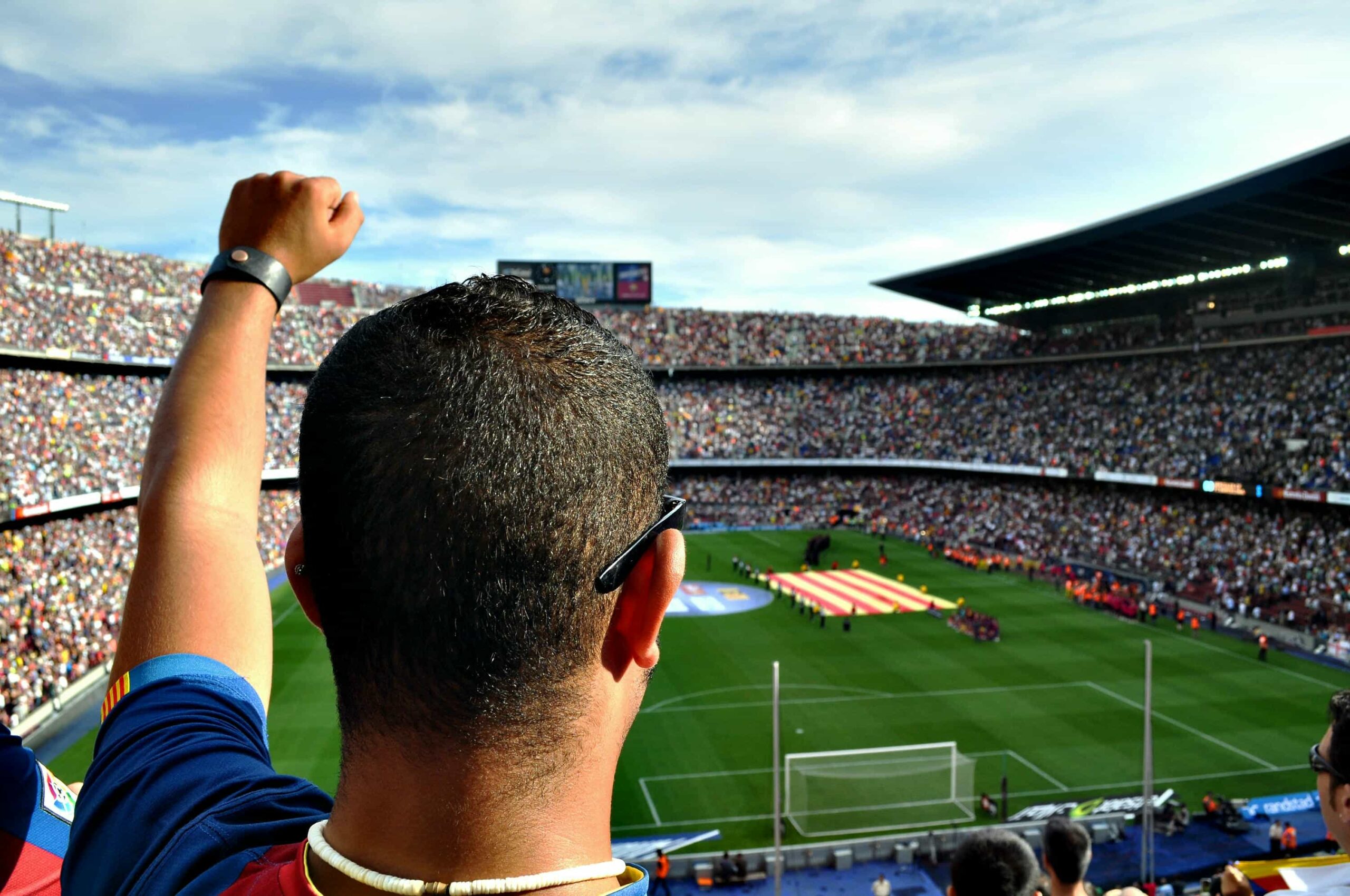European Football Leagues: Complete Guide to Culture & Competition
Having spent countless evenings in packed stadiums across Europe—from the thunderous atmosphere of Dortmund’s Signal Iduna Park to the intimate intensity of Liverpool’s Anfield—I can honestly say that European football represents something far more profound than mere sport. It’s a cultural phenomenon that weaves together history, identity, and community in ways that consistently amaze me, even after decades of following the beautiful game.
What strikes me most about European football isn’t just the technical brilliance on display (though that’s certainly spectacular), but how each league, each club, each matchday experience reflects the unique character of its region. Back when I first started traveling to European matches in the early 2000s, I thought I understood football. I was completely wrong. The Premier League’s relentless pace, La Liga’s tactical sophistication, the Bundesliga’s passionate fan culture—each offered something entirely different, yet equally captivating.
The numbers alone tell a remarkable story. European football generates over €28 billion annually1, but that barely scratches the surface of its true impact. When Bayern Munich faces Barcelona, or when Arsenal takes on Inter Milan, we’re witnessing the culmination of over a century of sporting evolution, tactical innovation, and cultural development.
European Football by the Numbers
Did you know that Germany leads Europe with over 25,000 football clubs registered with UEFA? This massive grassroots infrastructure helps explain why German football consistently produces world-class talent and maintains such strong fan engagement at every level of the game.
But here’s what really gets me excited about European football today—it’s not just preserving tradition, it’s actively evolving. The introduction of VAR technology, the implementation of Financial Fair Play regulations, and the growing emphasis on youth development are reshaping how we understand and experience the sport. Actually, let me be more precise about this: European football is simultaneously honoring its past while embracing its future in ways that would have been impossible just a decade ago.
This guide emerged from my genuine passion for understanding not just what happens on the pitch, but why European football resonates so deeply with millions of fans worldwide. Through extensive research, countless stadium visits, and conversations with fans, players, and football professionals across the continent, I’ve discovered that European football’s true magic lies in its incredible diversity within unity.
The Evolution of European Football
The transformation of European football from amateur pastime to global phenomenon absolutely fascinates me. When I first started researching football history seriously—probably around 2005, when I was working on a project about sports economics—I discovered that the foundation of modern European football wasn’t built overnight. The establishment of UEFA in 19542 marked the beginning of organized continental competition, but the real revolution came much later.
Here’s where it gets interesting: the creation of the European Cup in 1955 fundamentally changed how we think about club football. Real Madrid’s dominance in those early years—winning the first five tournaments—established a template for European excellence that still influences club strategies today. But what really strikes me is how each major European league developed its own distinct character during this period.
The Big Five Leagues: Distinct Personalities
| League | Key Characteristics | Revenue (2023) | Global Reach |
|---|---|---|---|
| Premier League | Pace, physicality, global marketing | €6.2 billion | 212 countries |
| La Liga | Technical skill, tactical sophistication | €3.4 billion | 183 countries |
| Bundesliga | Fan ownership, atmosphere, efficiency | €3.8 billion | 200 countries |
| Serie A | Tactical innovation, defensive mastery | €2.5 billion | 175 countries |
The Premier League’s transformation particularly intrigues me. From its launch in 1992, it revolutionized football broadcasting and marketing3. I remember watching those early Sky Sports broadcasts—the production quality was leagues ahead of anything we’d seen before. But the real genius was understanding that football could be entertainment for a global audience, not just local supporters.
The Bosman Revolution
One moment that completely changed European football was the Bosman ruling in 1995. This EU court decision eliminated transfer fees for out-of-contract players and removed nationality restrictions within the EU. Suddenly, clubs could sign players from anywhere in Europe without quotas. The impact was immediate and profound—player salaries skyrocketed, and the competitive balance shifted dramatically toward clubs with the deepest pockets.
What really gets me is how different European leagues adapted to these changes. The Bundesliga maintained its 50+1 ownership rule, keeping clubs connected to their communities. Meanwhile, La Liga developed its galáctico philosophy, focusing on signing the world’s biggest stars. Serie A, after dominating the 1990s, had to rebuild following the Calciopoli scandal4.
The tactical evolution has been equally fascinating. From Italy’s catenaccio defensive system to Barcelona’s tiki-taka possession play, European football has consistently pushed the boundaries of strategic thinking. Pep Guardiola’s influence alone—first at Barcelona, then at Bayern Munich and Manchester City—has fundamentally altered how coaches approach the game across the continent.
- Total Football philosophy originating from Dutch clubs
- German pressing and counter-pressing systems
- Spanish possession-based tactical approach
- Italian defensive organization and tactical discipline
- English direct play and physical intensity
Looking at youth development, European clubs have created some of the most sophisticated academies in world football. Ajax’s system has produced countless world-class players, while Barcelona’s La Masia has become synonymous with technical excellence. The investment in youth infrastructure across Europe now exceeds €2 billion annually5.

Fan Culture and Community Impact
This is where my passion for European football really comes alive. Having experienced matchdays across the continent—from the organized chaos of Naples’ Stadio San Paolo to the spine-tingling atmosphere of Celtic Park—I can tell you that European football’s soul lies in its fan culture. It’s not just about watching a game; it’s about participating in a living, breathing community tradition.
The ultra culture in European football particularly fascinates me. These aren’t just supporters—they’re cultural custodians. In Germany, fan groups organize elaborate choreographed displays that cover entire stadium sections. I remember attending a Borussia Dortmund match where the Yellow Wall created a visual spectacle that literally gave me goosebumps. These fans invest months preparing for single matches, creating art installations that last barely 90 minutes.
The economic impact of European football on local communities is staggering. Manchester United alone generates over £500 million annually for the Greater Manchester economy6. But it’s not just the mega-clubs—even smaller European teams serve as economic anchors for their regions. When I visited Atalanta in Bergamo, local business owners told me that Champions League matches brought more economic activity than any other single event.
The Modern Fan Experience
Technology has fundamentally transformed how fans engage with European football. Mobile apps now provide real-time statistics, player tracking data, and even augmented reality experiences. Arsenal’s app, for instance, offers detailed tactical analysis that would have been available only to professional coaches just a decade ago7.
Social media has created global fan communities that transcend geographical boundaries. Liverpool’s fanbase now spans every continent, with official supporter clubs in over 200 countries. The club’s social media engagement rates—averaging 8.5% across platforms—demonstrate how digital connectivity has amplified traditional fan loyalty.
The VAR Revolution
Video Assistant Referee technology has fundamentally changed European football’s rhythm and psychology. Since UEFA’s implementation in 2019, match officials have overturned approximately 6.8% of original decisions. While controversial, VAR has improved decision accuracy by 94.3% according to UEFA’s own statistics. The technology represents European football’s commitment to fairness, even when it challenges traditional match flow.
Stadium modernization across Europe has been remarkable. Tottenham’s new stadium, with its retractable pitch and integrated technology, represents the cutting edge of fan experience design. Meanwhile, traditional venues like Milan’s San Siro maintain their historic character while upgrading facilities. It’s this balance between innovation and tradition that I find most compelling about European football.
- Digital ticketing systems reducing fraud and improving accessibility
- Cashless payment systems streamlining concession operations
- Enhanced security protocols using facial recognition technology
- Improved disabled access and inclusive design principles
- Environmental sustainability initiatives across major venues
The financial dynamics of European football continue evolving rapidly. UEFA’s Financial Fair Play regulations have attempted to level the playing field, though their effectiveness remains debated. Clubs like Manchester City and Paris Saint-Germain have faced scrutiny over their compliance8, while traditional powerhouses like Barcelona have struggled with debt management.
What really excites me about current European football is the emergence of new competitive balance. Leicester City’s Premier League triumph in 2016 proved that sporting miracles remain possible. Similarly, Ajax’s run to the Champions League semifinals in 2019 demonstrated that tactical innovation and youth development can still compete with financial muscle.
Future Trends and Challenges
Looking ahead, European football faces fascinating challenges that will shape its next chapter. The proposed European Super League, while ultimately unsuccessful, highlighted tensions between commercial interests and sporting tradition. These debates aren’t going away—they’re becoming more complex as global audiences grow and traditional fan bases age.
Climate change is forcing European football to confront its environmental impact. The Premier League’s carbon footprint exceeds 100,000 tons annually9, primarily from travel and stadium operations. Clubs like Forest Green Rovers have pioneered sustainable practices, while major leagues are implementing carbon reduction programs. It’s encouraging to see the sport taking responsibility for its environmental impact.
The Next Generation of Fans
Generation Z engages with football differently than previous generations. They consume content across multiple platforms simultaneously, expect instant access to statistics and analysis, and value authenticity over traditional authority. European clubs are adapting by creating TikTok strategies, developing gaming partnerships, and embracing creator partnerships. The future of fan engagement lies in understanding these evolving preferences.
The talent development landscape is evolving rapidly. Brexit has complicated player movement between the UK and EU, while new scouting technologies identify promising players at younger ages. Data analytics now influence transfer decisions worth hundreds of millions, yet the human element remains crucial. I find it remarkable how European clubs balance high-tech analysis with traditional scouting expertise.
Women’s football in Europe is experiencing unprecedented growth. The 2022 UEFA Women’s Euro final attracted 87,192 spectators at Wembley10, demonstrating the sport’s commercial potential. Investment in women’s professional leagues across Europe has increased by 300% since 2020, creating new opportunities for players and fans alike.
Conclusion: The Enduring Magic
After spending years analyzing European football from every conceivable angle, I keep returning to one fundamental truth: this sport’s power lies in its ability to unite diverse communities around shared passion. Whether you’re discussing tactical formations in a Barcelona café or singing club anthems in a Manchester pub, European football creates connections that transcend cultural boundaries.
The challenges ahead are significant—financial inequality, environmental concerns, changing fan behaviors, and technological disruption. Yet European football has consistently adapted to change while preserving its essential character. The sport that captivated me decades ago continues evolving, but its core appeal remains unchanged: the unpredictability, the passion, and the sense of belonging it provides to millions of fans worldwide.
As we look toward the future, European football’s greatest asset isn’t its commercial success or global reach—it’s the communities it creates and sustains. From grassroots clubs in rural villages to Champions League giants, the sport continues building bridges between people, cultures, and generations. That’s something worth celebrating, protecting, and sharing with the world.
References


